Samsung Galaxy Nexus & Ice Cream Sandwich Review
by Brian Klug & Anand Lal Shimpi on January 18, 2012 1:34 PM ESTWiFi
The Galaxy Nexus uses Broadcom’s BCM4330, which is starting to pick up steam and become just as ubiquitous as the BCM4329 it replaced. The Galaxy Nexus’ BCM4330 includes both 2.4 and 5 GHz WLAN connectivity, just like the SGS2 in fact. What’s particularly notable is that Android 4.0.x now includes the proper prioritization for each WiFi band, and also includes the ability to set preference for one band for the other. By default, when faced with the same SSID on both 2.4 and 5 GHz, the Galaxy Nexus correctly chooses the 5 GHz AP if the signal is favorable, then falls over to 2.4 GHz when its link quality on that band would be better. Other than this notable change, the remainder of the WiFi settings panes are unchanged. The WiFi sleep preferences and the main scan and connect page does get a minor facelift and change, however.
The Galaxy Nexus latched onto my 802.11n APs on both 2.4 and 5 GHz and used 20 MHz long guard interval rates at 65 Mbps the same as other BCM4330 based devices. Throughput is unsurprisingly very good on the Galaxy Nexus in our WiFi test, which consists of downloading a 100 MB PDF hosted locally over WiFi. Of course, since we can now control and choose which band the device uses, I tested on both 2.4 GHz and 5 GHz, both with a negotiated link rate of 65 Mbps.

WiFi range on the Galaxy Nexus is good as well, I can make it to the same place before hopping off my network as other devices. I have gotten a few emails and read reports about power-save mode incompatibility with some APs that causes it to drop off when on standby mode. Since we've seen BCM4330 work just fine on other devices, I have no doubt this is a software issue which will be fixed soon.
Speakerphone
As usual I also measured speakerphone volume on both variants of the Galaxy Nexus using a sound datalogger. There is apparently a difference between the two models, possibly from different acoustical chambers in the vibration unit and antenna. Also there’s possibly still a difference as a result of the different voice coders in use, and the different dynamic range.
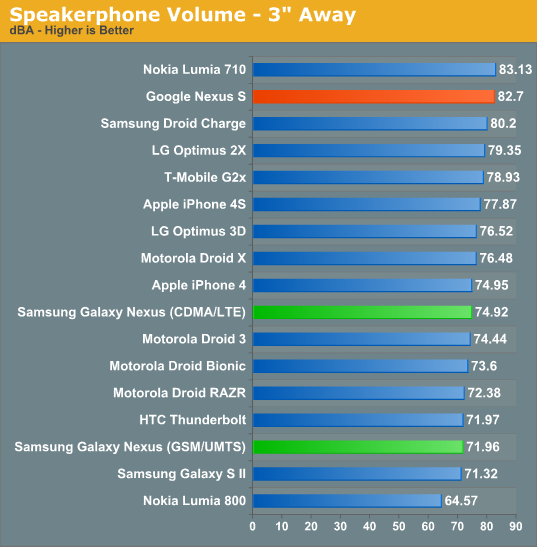
Either way, the two test differently, and subjectively my experience backs those measurements up. I found the GSM/UMTS Galaxy Nexus a bit too quiet while using Google Navigation, and the CDMA/LTE Galaxy Nexus on the quieter side but totally useable for Navigation.
GPS
Just like the SGS2, the Galaxy Nexus uses a SiRFStarIV GSD4t for GPS. Subjectively the Galaxy Nexus GPS doesn’t lock quite as fast as some of the other GNSS solutions that are integrated into the cellular basebands in phones, but it does get the job done pretty fast. I see a time to first fix of between 4-7 seconds depending on visible sky swath presented to the handset.
I did receive a few emails from readers with reports of some Galaxy Nexuses shipping with GPS issues or taking too long to lock. One of my friends with a CDMA/LTE Galaxy Nexus also reported that he couldn’t get a GPS lock at all for Google Navigation. I’m not entirely sure what the deal is here since I never was able to encounter this behavior, although manually downloading the A-GPS data (ephemeris) using a tool like GPS Status seems to in general helps mitigate those problems when they do happen. This just manually re-downloads the xtra.bin file from http://xtra1.gpsonextra.net/xtra.bin as configured in gps.conf. I have to admit that I didn’t encounter any GPS issues in my time with the Google Nexus (CDMA/LTE or GSM/UMTS version) so far.
Audio
We’re going to do a more in-depth audio analysis with the Galaxy Nexus when we have our testing suite more fleshed out, and possibly bring you Francois Simond’s thoughts once more. For now however, we have some RMAA runs I talked about a while ago in another review, and my own impressions with Galaxy Nexus sound after using the device for a while now as my primary music player with some Shure SE535s.
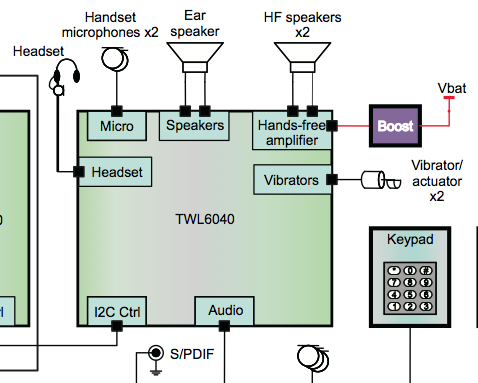
First off, the Galaxy Nexus out of the box is pretty decent subjectively. The Galaxy Nexus uses TI’s TWL6040 low power audio codec for its DAC and other audio responsibilities, alongside the vibrator actuator. We’ve seen some other TI audio codecs (like AIC3254 in the HTC Sensation) but this our first time seeing TWL6040. Almost immediately I noticed that there isn’t any constant high frequency whine present like I’ve heard on so many phones lately (Bionic, SGS2, others), and it’s hard to hear any noise when the DAC turns on and off after music stops playing. Even plugged into USB power, the device also doesn’t pick up any more noise or change at all. There’s also almost no CPU noise, though if you listen very carefully you can indeed hear some state changes, but it’s very minimal and very difficult to pick out.
Though the frequency response isn’t entirely flat as shown, the Galaxy Nexus doesn’t sound bad subjectively. Our testing here is just a RMAA run from line out on the devices to line in on an ASUS Xonar Xense sound card. In addition, testing is done at 44100/16 bit on the devices - Android will downsample anything more than this.

From 20 Hz to 20 kHz: +0.10, -0.62 (dB)
Noise on the Galaxy Nexus also isn’t bad, definitely better than the RAZR we tested earlier.

Noise Level: -96.2 (dB, A weight)
Dynamic range shows the difference in level between the maximum output and minimum output on the smartphone. This is limited by voltage swing and system noise. Galaxy Nexus again here looks pretty good, minus a few spikes.

Dynamic range: 96.0 (dB, A weight)
The two total harmonic distortion charts are next, which are the summation of integer multiples of the test frequency and expressed as a ratio of the input signal (in this case at 1 kHz). THD+Noise gives all frequencies except the input signal. The Galaxy Nexus is pretty good here, but still has some spikes at a few noteworthy integer multiples, plus some odd spikes at high frequencies.
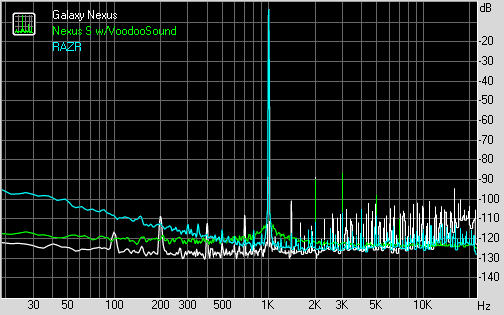
THD %: 0.0088
Intermodulation distortion is similar to total harmonic distortion, however it applies two input signals and then measures the signal at all frequencies except the two inputs. In this case, the two signals are on opposite sides of the spectrum. Galaxy Nexus ends up not looking too bad here although there are disconcerting spikes above 1 kHz that I can’t explain.
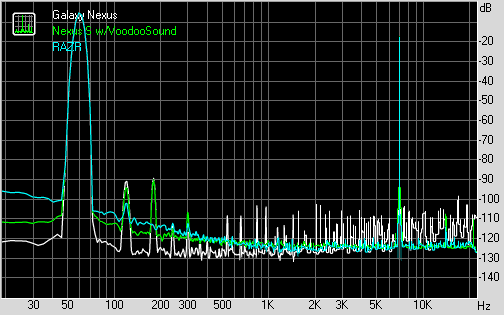
IMD + Noise %: 0.013
Finally stereo crosstalk is pretty flat on the Galaxy Nexus.

Stereo Crosstalk: -87.4 dB
Again, this isn’t meant to be a totally comprehensive analysis of the Galaxy Nexus’ sound characteristics, just some educated impressions. Subjectively the Galaxy Nexus sounds nice and clean, and is absent of the annoyingly audible background noise and whine that’s present on some of the other noteworthy phones we’ve tried as of late. Francois (supercurio) has expressed a few times that the Galaxy Nexus has good audio potential, and that alone should tell you something.


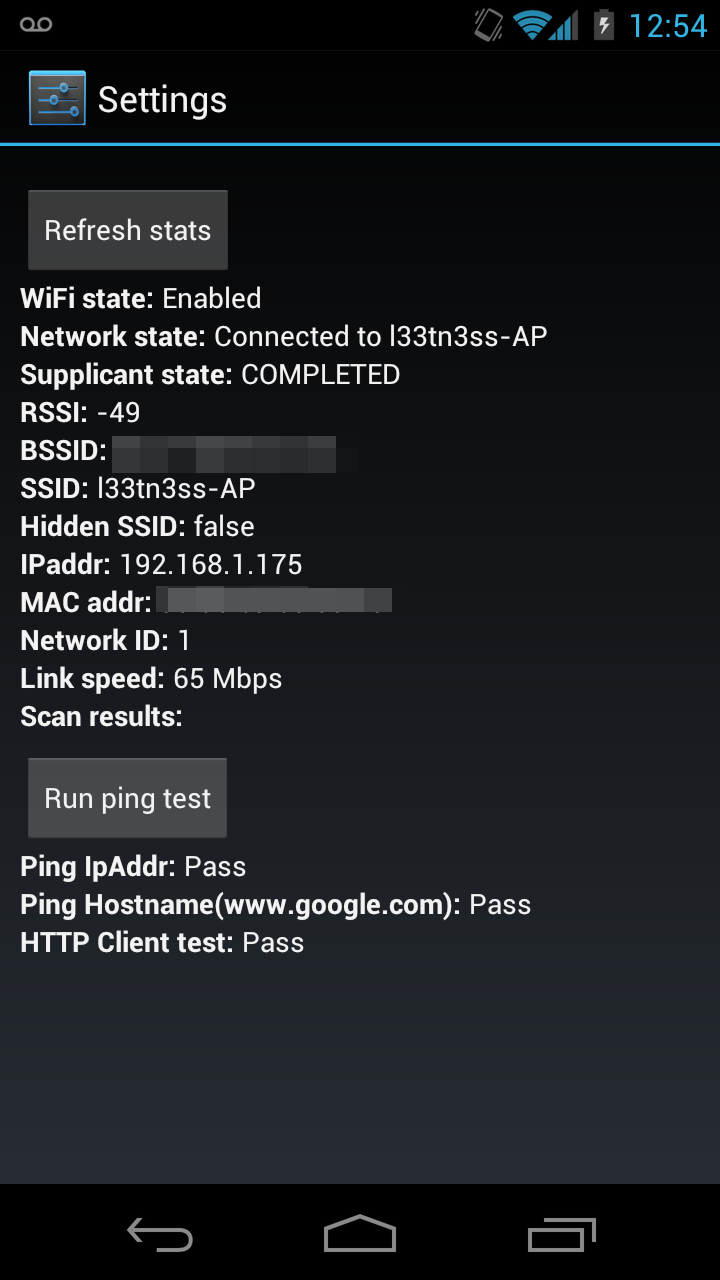
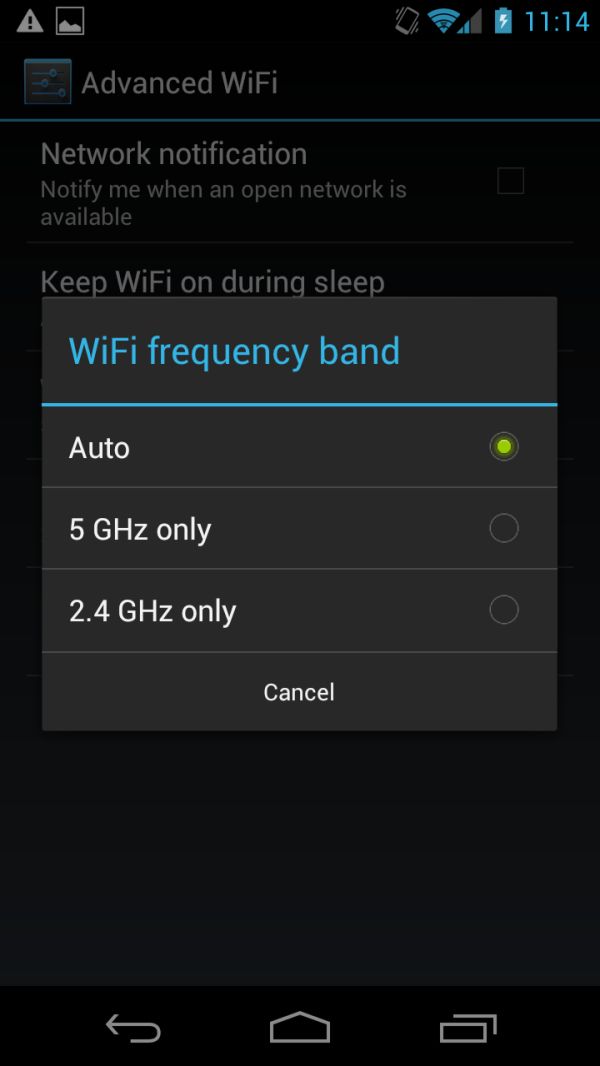
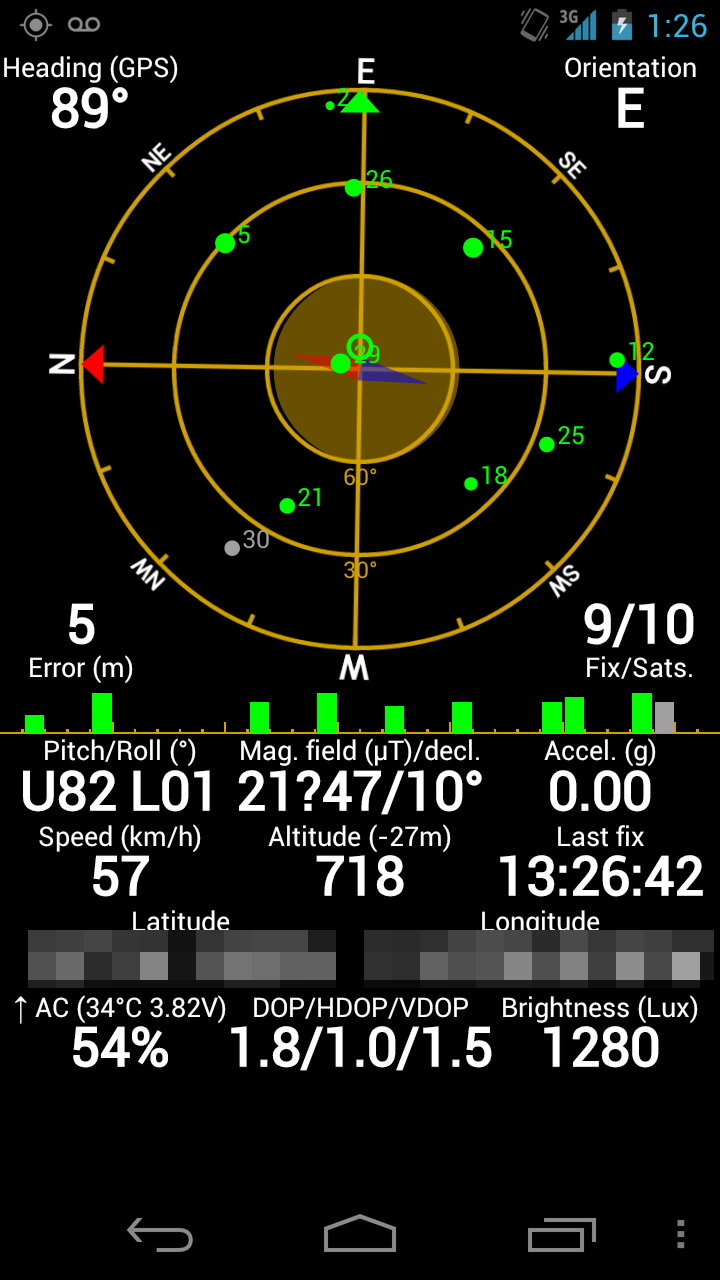








185 Comments
View All Comments
zorxd - Friday, January 20, 2012 - link
They can have some differences (cache size, memory bandwidth, neon instructions) but the A9 is not an ISA. ARMv7 is.Given that it has the same configuration, an Apple A5 behave the same as a TI OMAP4 or a Samsung Exynos of the same clock speed. I beleive nVidia tegra2 lacks the neon instructions so can be slower in some cases. There is an article on Anandtech about this.
Given that the iPhone 4S is only 800 MHz it is the slowest A9 CPU by far.
pSupaNova - Friday, January 20, 2012 - link
The GPU's on the IPhone uses Tiling so in most GPU rendering tasks it will be a lot faster, However spit lots of Triangles at it and then see how fast it really it is.StormyParis - Wednesday, January 18, 2012 - link
It's not all about performance, at least if you don't do FPS games. The screen on the Nexus is much bigger than on the 4S for example. For me, it's not about performance at all. I went for the GN for its even bigger screen, and that criteria alone was 95% of my decision, the remain 5% being "... and the rest don't suck", and "has xda-dev support'.humancyborg - Wednesday, January 18, 2012 - link
Once you start accelerating the entire interface, performance becomes much more significant than just FPS games. There's a reason Apple uses such a gigantic and powerful GPU in their devices, and it's definitely not only for FPS gamers.Agree with you on the rest, there are other good reasons to buy this phone, just a shame that they skimped here. I have the 4S, GN and Lumia 800 currently and constantly switch around between them.
metafor - Wednesday, January 18, 2012 - link
It doesn't really take a whole lot of resources to render a 2D interface. Just about any ol' GPU with OpenGL ES 2.0 support will do it.About the only thing where the GPU is the limiting factor is rendering 3D games. And even then, most if not the vast majority of games on the market will continue to be written for this level of hardware for at least the coming year.
Honestly, people take benchmarks way too seriously.
doobydoo - Thursday, January 19, 2012 - link
Actually, you're absolutely wrong.In fact, the GPU slowness is cited in this very article for causing slowdowns in situations where no 3D gaming is being done.
Remember, the operating system as a whole is hardware accelerated, so every thing you do - animations, transitions, task switching, etc are carried out by the GPU. With the higher screen, the speed of the GPU becomes even more relevant.
The combination of a high resolution screen and a low powered GPU is a bad combination and materially affects the performance of everything you do on the phone.
zorxd - Thursday, January 19, 2012 - link
Do you remember the iPhone 4? Who complained that the GPU was slow? It was much slower than the SGX540 in the Galaxy S.metafor - Thursday, January 19, 2012 - link
Speculation in an article isn't exactly proof of concept.Alpha blending, panning, compositing are very light tasks for a GPU pipeline; it's only a problem when a GPU is TMU-limited. And if it's TMU-limited, it would be obvious all the time.
I don't think you quite grasp exactly what parts of UI rendering are handled -- or could be -- by the GPU and just how trivial it is compared to rendering a 3D game.
trob6969 - Wednesday, January 18, 2012 - link
What i don't understand is why would samsung give the gn 1gig of ddr2 ram then give it an inferior GPU? But to be fair, Apple is no better. Why give iphone 4s a powerful GPU then give it only 512 mb of ram?! My old-ass og moto droid from over 2yrs. ago had that much!doobydoo - Thursday, January 19, 2012 - link
As alluded to by numerous posters, including one in this comments section, iOS handles memory usage more efficiently than Android so it doesn't suffer any performance penalty as a result of having less RAM.